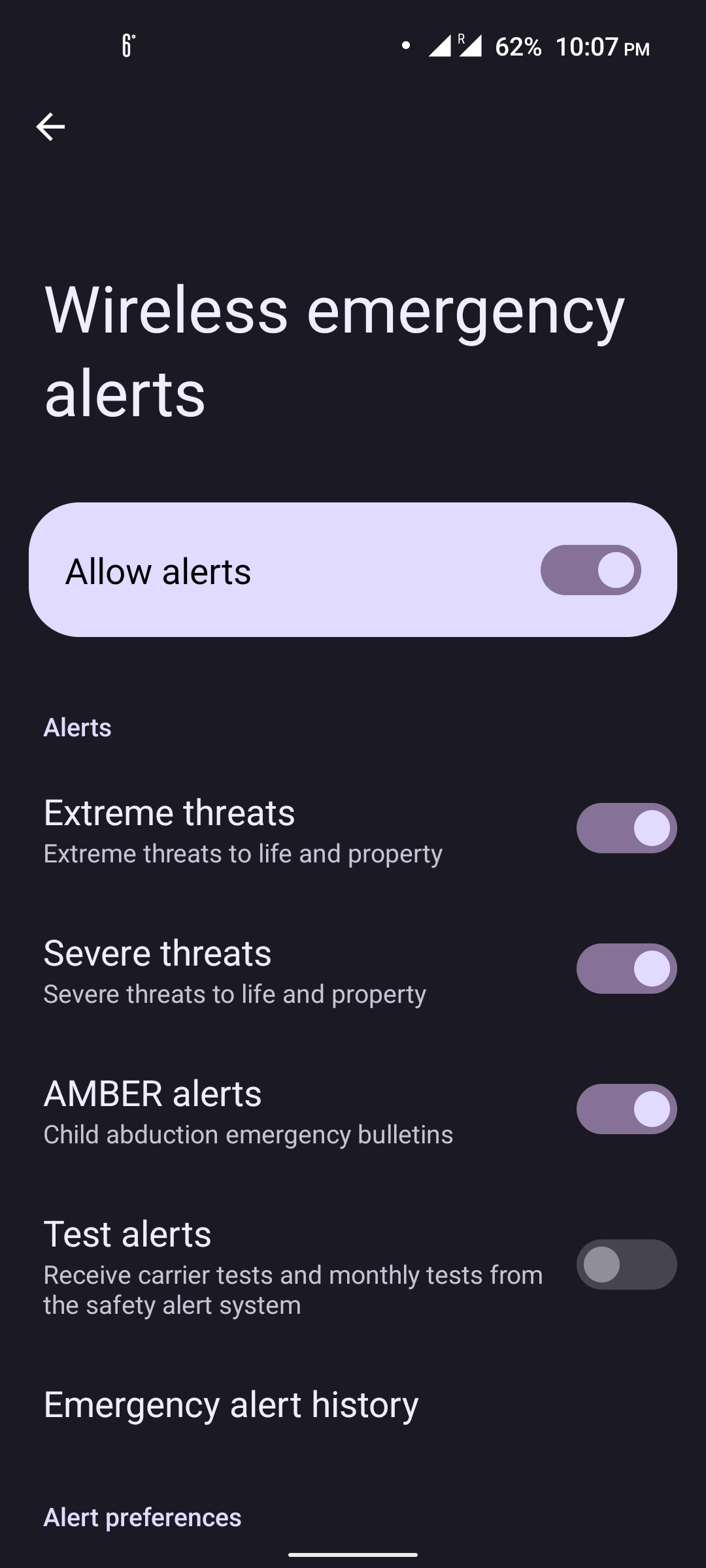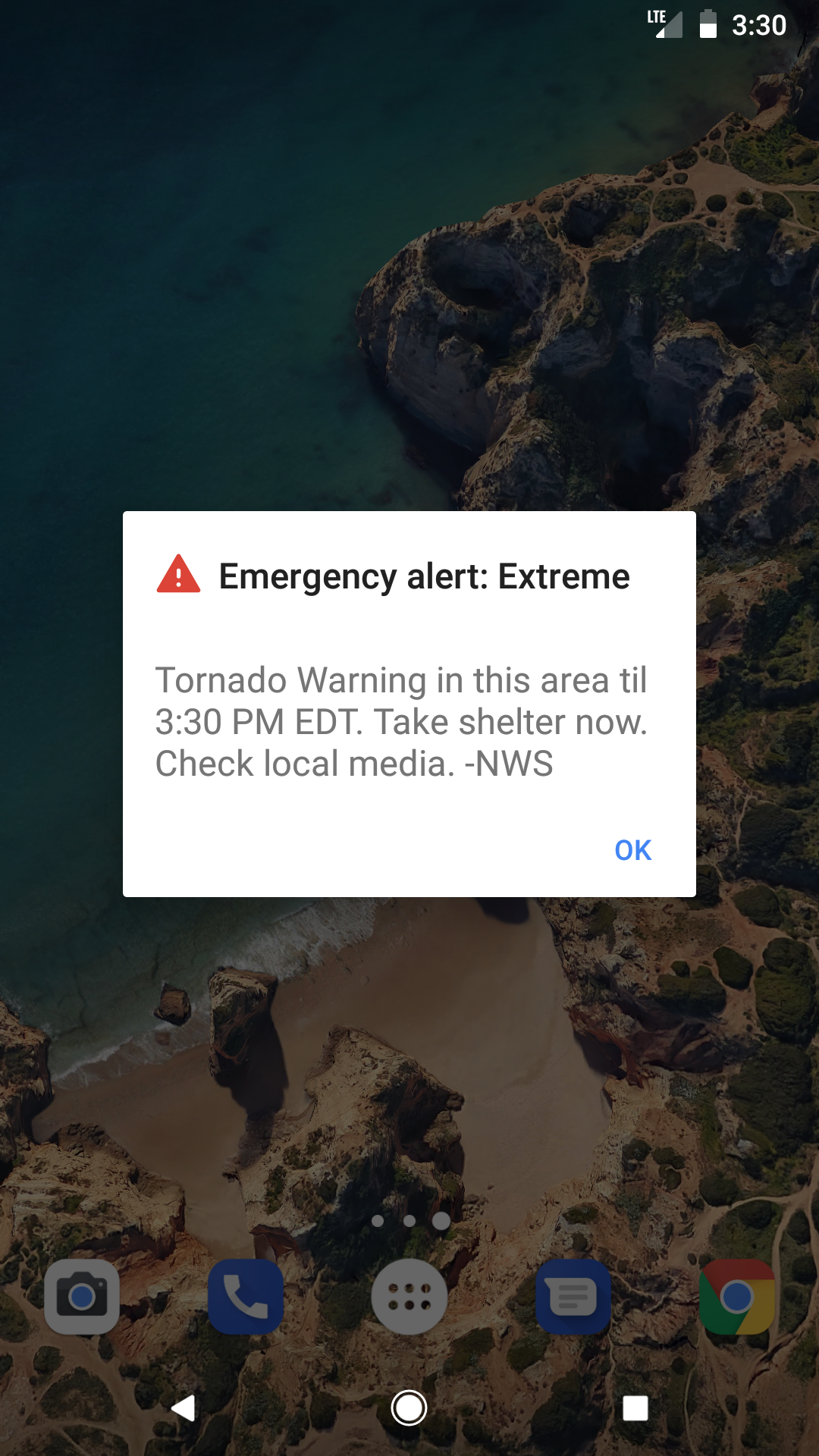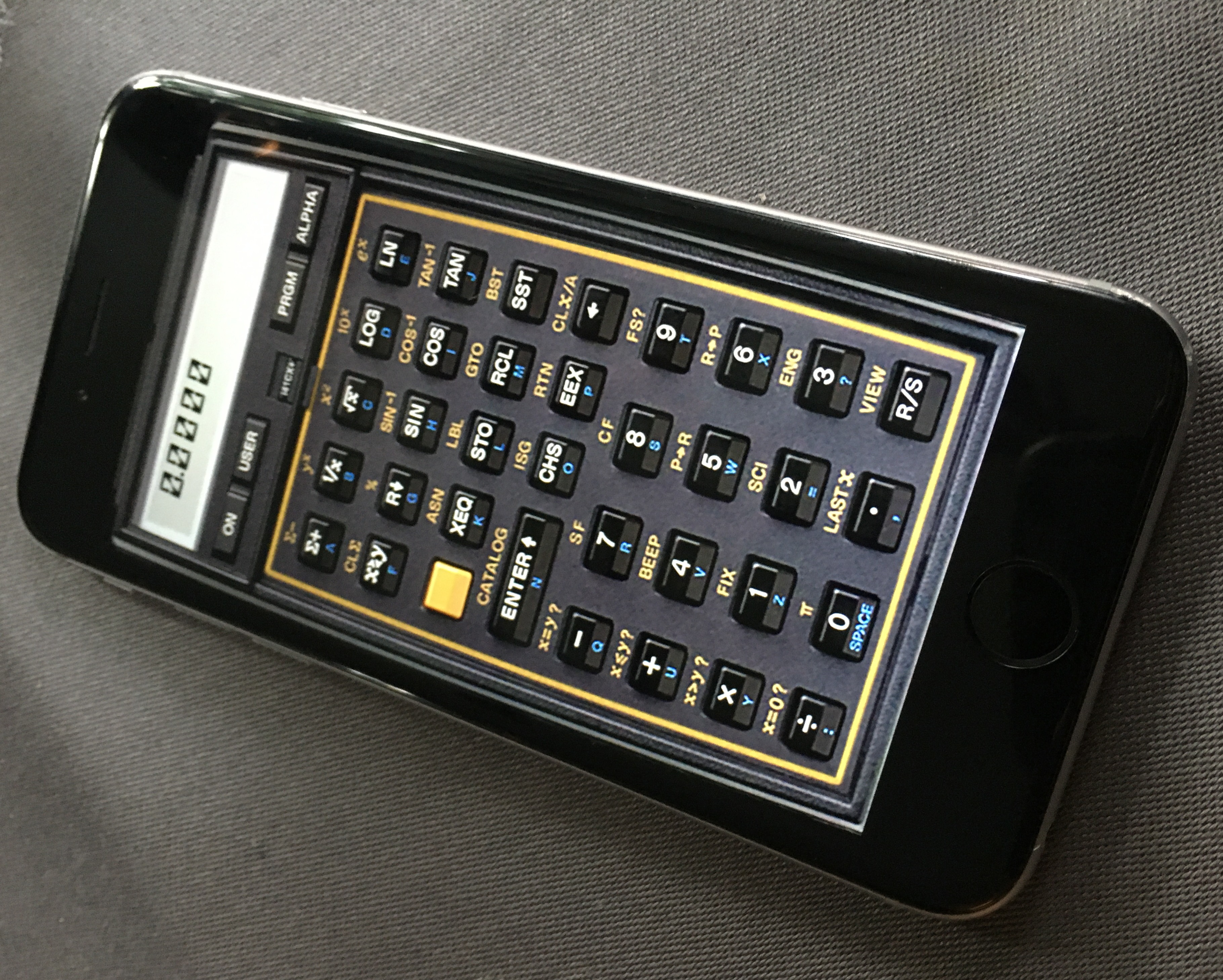|
Cell Broadcast
Cell Broadcast (CB) is a method of simultaneously sending Short Message Service, short messages to multiple mobile telephone users in a defined area. It is defined by the ETSI's GSM committee and 3GPP and is part of the 2G, 3G, 4G and 5G standards. It is also known as Short Message Service-Cell Broadcast (SMS-CB or CB SMS). Unlike Short Message Service-Point to Point (SMS-PP), Cell Broadcast is a Point-to-multipoint communication, one-to-many geo-targeted and geo-fenced messaging service. Cell Broadcast technology is widely used for Emergency population warning, public warning systems. History Cell Broadcast messaging was first demonstrated in Paris in 1997. Some mobile operators used Cell Broadcast for communicating the area code of the antenna cell to the mobile user (via channel 050), for nationwide or citywide alerting, weather reports, mass messaging, location-based service, location-based news, etc. Cell broadcast has been widely deployed since 2008 by major Asian, US, Ca ... [...More Info...] [...Related Items...] OR: [Wikipedia] [Google] [Baidu] |
Emergency Population Warning
An emergency population warning, or public warning system is a method where by local, regional, or national authorities can contact or notify members of the public to warn them of an impending emergency. These warnings may be necessary for a number of reasons, including: * Weather emergencies such as Cyclone, cyclones, Flood, flooding, tornadoes, Avalanche, avalanches and severe weather. * Geological disasters such as earthquakes, landslides, volcanic eruptions, and tsunamis. * Industrial disasters such as the release of toxic gas or contamination of river water. * Radiological disasters such as a nuclear meltdown, nuclear plant disaster. * Medical emergencies such as an outbreak of a fast-moving infectious disease or pandemic. * Warfare such as Airstrike, air raids or acts of terrorism. * Other events, such as prison escapes, AMBER Alert, abducted children or emergency telephone number outages. They are often disseminated during urgent events such as Emergency evacuation, evacuati ... [...More Info...] [...Related Items...] OR: [Wikipedia] [Google] [Baidu] |
Android 12 Wireless Emergency Alerts
Android most commonly refers to: *Android (robot), a humanoid robot or synthetic organism designed to imitate a human * Android (operating system), a mobile operating system primarily developed by Google * Android TV, a operating system developed by Google for Smart TVs Android may also refer to: Science and technology * The Android mascot, the mascot of the Android operating system Arts and entertainment Film * ''Android'' (film), a 1982 film directed by Aaron Lipstadt * ''Android'', the Russian title for the 2013 film '' App'' Music * The Androids, an Australian rock band * "Android" (song), a 2012 song by TVXQ * "Android", a song by Green Day from the album ''Kerplunk'' * "Android", a song on The Prodigy's ''What Evil Lurks'' EP Games * ''Android'' (board game), published by Fantasy Flight Games Other uses in arts and entertainment * Amazo, DC Comics character aka The Android * ''The Android'' (novel), by K. A. Applegate * Android 18, ''Dragon Ball'' manga character * ... [...More Info...] [...Related Items...] OR: [Wikipedia] [Google] [Baidu] |
UMTS
The Universal Mobile Telecommunications System (UMTS) is a 3G mobile cellular system for networks based on the GSM standard. UMTS uses Wideband Code Division Multiple Access, wideband code-division multiple access (W-CDMA) radio access technology to offer greater spectral efficiency and bandwidth to mobile network operators compared to previous 2G systems like GPRS and Circuit Switched Data, CSD. UMTS on its provides a peak theoretical data rate of 2 Data-rate units, Mbit/s. Developed and maintained by the 3GPP (3rd Generation Partnership Project), UMTS is a component of the International Telecommunication Union IMT-2000 standard set and compares with the CDMA2000 standard set for networks based on the competing IS-95, cdmaOne technology. The technology described in UMTS is sometimes also referred to as Freedom of Mobile Multimedia Access (FOMA) or 3GSM. UMTS specifies a complete network system, which includes the radio access network (UMTS Terrestrial Radio Access Network, or U ... [...More Info...] [...Related Items...] OR: [Wikipedia] [Google] [Baidu] |
Sine Wave
A sine wave, sinusoidal wave, or sinusoid (symbol: ∿) is a periodic function, periodic wave whose waveform (shape) is the trigonometric function, trigonometric sine, sine function. In mechanics, as a linear motion over time, this is ''simple harmonic motion''; as rotation, it corresponds to ''uniform circular motion''. Sine waves occur often in physics, including wind waves, sound waves, and light waves, such as monochromatic radiation. In engineering, signal processing, and mathematics, Fourier analysis decomposes general functions into a sum of sine waves of various frequencies, relative phases, and magnitudes. When any two sine waves of the same frequency (but arbitrary phase (waves), phase) are linear combination, linearly combined, the result is another sine wave of the same frequency; this property is unique among periodic waves. Conversely, if some phase is chosen as a zero reference, a sine wave of arbitrary phase can be written as the linear combination of two sine wa ... [...More Info...] [...Related Items...] OR: [Wikipedia] [Google] [Baidu] |
Hertz (frequency)
The hertz (symbol: Hz) is the unit of frequency in the International System of Units (SI), often described as being equivalent to one event (or cycle) per second. The hertz is an SI derived unit whose formal expression in terms of SI base units is 1/s or s−1, meaning that one hertz is one per second or the reciprocal of one second. It is used only in the case of periodic events. It is named after Heinrich Rudolf Hertz (1857–1894), the first person to provide conclusive proof of the existence of electromagnetic waves. For high frequencies, the unit is commonly expressed in multiples: kilohertz (kHz), megahertz (MHz), gigahertz (GHz), terahertz (THz). Some of the unit's most common uses are in the description of periodic waveforms and musical tones, particularly those used in radio- and audio-related applications. It is also used to describe the clock speeds at which computers and other electronics are driven. The units are sometimes also used as a representation of the e ... [...More Info...] [...Related Items...] OR: [Wikipedia] [Google] [Baidu] |
European Telecommunications Standards Institute
The European Telecommunications Standards Institute (ETSI) is an independent, not-for-profit, standardization organization operating in the field of information and communications. ETSI supports the development and testing of global technical standards for ICT-enabled systems, applications and services. Overview and history ETSI was set up in 1988 by the European Conference of Postal and Telecommunications Administrations ( CEPT) following a proposal from the European Commission (EC). ETSI is the officially recognized body with a responsibility for the standardization of information and communication technologies (ICT). It is one of the three bodies officially recognized by the European Union as a European Standards Organisation (ESO), the others being CEN and CENELEC. The role of the ESOs is to support EU regulation and policies through the production of harmonised European Standards (ENs) and other deliverables. The standards developed by ESOs are the only ones that can ... [...More Info...] [...Related Items...] OR: [Wikipedia] [Google] [Baidu] |
EU-Alert
EU-Alert is a Public Warning System designed to disseminate emergency alerts to mobile phones based on Cell Broadcast technology, as defined by ETSI standards. National authorities are able to disseminate emergency alerts and warning messages through the system. EU-Alert is a standard designed for interoprability and national implementation may vary. The standards are based on NL-Alert from the Netherlands, which first became operational in 2012. EU-Alert standard The EU-Alert standard (TS 102 900 V1.3.1) as defined by ETSI is the European Public Warning Service using the Cell Broadcast Service as a means of delivering public warning messages to the general public. Cell Broadcast is not affected by traffic load; therefore, it is very suitable during a disaster when load spikes of data, SMS and voice calls usage ( mass call events) tend to significantly congest mobile networks, as multiple events have shown. Specific countries using the EU-Alert service are identified by repla ... [...More Info...] [...Related Items...] OR: [Wikipedia] [Google] [Baidu] |
Wireless Emergency Alerts
Wireless Emergency Alerts (WEA), formerly known as the Commercial Mobile Alert System (CMAS) and, prior to that, as the Personal Localized Alerting Network (PLAN), is an alerting network in the United States designed to disseminate emergency alerts to cell phones using Cell Broadcast technology, similar to the radio and television counterpart, the Emergency Alert System. Organizations are able to disseminate and coordinate emergency alerts and warning messages through WEA and other public systems by means of the Integrated Public Alert and Warning System. Background The Federal Communications Commission (FCC) proposed and adopted the network structure, operational procedures and technical requirements in 2007 and 2008 in response to the ''Warning, Alert, and Response Network (WARN) Act'' passed by Congress in 2006, which allocated $106 million to fund the program. CMAS will allow federal agencies to accept and aggregate alerts from the President of the United States, the Natio ... [...More Info...] [...Related Items...] OR: [Wikipedia] [Google] [Baidu] |
Mass Call Event
A mass call event or mass calling event (also MCE in telephony usage) is a situation in which an extraordinarily high number of telephone calls are attempted into or out of an area, causing tremendous network congestion, and resulting in service that is significantly degraded or potentially unavailable. The term is typically used with mobile telephony systems, in which there are simply not enough radio channels available in a given cell or cells. This causes blocked calls or dropped calls. However, it can also apply to landline phones, in which not enough trunking telephone circuits are available into and out of any given telephone exchange or equivalent switching office at any level of the public switched telephone network (PSTN). An MCE is typically caused by a sudden disaster of some sort, such as an earthquake or explosion. One of the earliest examples was the Iroquois Theatre Fire in Chicago in 1903. The 1963 Kennedy assassination represented a mass call event f ... [...More Info...] [...Related Items...] OR: [Wikipedia] [Google] [Baidu] |
Mobile App
A mobile application or app is a computer program or software application designed to run on a mobile device such as a smartphone, phone, tablet computer, tablet, or smartwatch, watch. Mobile applications often stand in contrast to desktop applications which are designed to run on desktop computers, and web applications which run in mobile web browsers rather than directly on the mobile device. Apps were originally intended for productivity assistance such as email, calendar, and contact databases, but the public demand for apps caused rapid expansion into other areas such as mobile games, factory automation, GPS and location-based services, order-tracking, and ticket purchases, so that there are now millions of apps available. Many apps require Internet access. Apps are generally downloaded from app stores, which are a type of digital distribution platforms. The term "app", short for "Application software, application", has since become very popular; in 2010, it was listed as " ... [...More Info...] [...Related Items...] OR: [Wikipedia] [Google] [Baidu] |
Social Media
Social media are interactive technologies that facilitate the Content creation, creation, information exchange, sharing and news aggregator, aggregation of Content (media), content (such as ideas, interests, and other forms of expression) amongst virtual communities and Network virtualization, networks. Common features include: * Online platforms enable users to create and share content and participate in social networking. * User-generated content—such as text posts or comments, digital photos or videos, and data generated through online interactions. * Service-specific profiles that are designed and maintained by the List of social networking services, social media organization. * Social media helps the development of online social networks by connecting a User profile, user's profile with those of other individuals or groups. The term ''social'' in regard to media suggests platforms enable communal activity. Social media enhances and extends human networks. Users access so ... [...More Info...] [...Related Items...] OR: [Wikipedia] [Google] [Baidu] |








